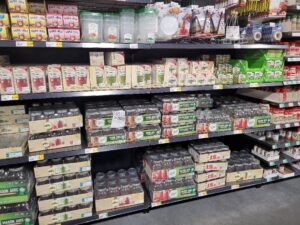Last night was bone-chillingly cold and was accompanied by winds that cut through you like a laser beam. As the expression goes, t’was a night not fit for man nor beast. And what is the one thing that most often would make someone venture out onto the two-lane skating rink? Food. And this is why storing food is, to me, more paramount than almost anything else.
Guns are the super sexy part of survivalism. They are, often, the first thing that a freshly-minted survivalist starts stockpiling. And, sadly, it is often the thing that captures the most resources, attention, and time…often to the detriment of the more mundane things.
There’s no two ways about it, guns (and their attendant accessories) are quite important. But part of the focus of survivalism is…surviving. If I have plenty of food on hand, I don’t have to go anywhere. I don’t have to leave the relative safety of my house. I can stay behind my locked doors, in my heated home, and let the world go by.
Now, you could argue that, if you have the guns then you don’t need to worry about your safety when you leave your house to get food. This is an interesting argument, but it doesn’t pass the smell test. Going out to get food while heavily armed is probably safer than doing that same thing while unarmed. But you know what’s safer than that? Not having to go out at all. By eliminating the need to go out for food you eliminate the risks incurred by ‘going outside your wire’.
There is, of course, risk to staying home as well. However, that’s the same risk regardless of whether you are armed or not. Obviously, the best situation is to be well-stocked with food so that you don’t have to leave your secure area, and then to be armed so you have the ability to defend your secure area.
Nine times out of ten, stored food will be more useful than stored ammo. But, its because of that 10% that we keep the ammo and guns onhand.
Regardless, it’s minus something outside right now and I don’t have to get into a cold truck, risk icy roads, walk across slippery parking lots, ad just in general experience miserable cold….because I have a kitchen and storage area full of food.
So..yay me.










